20 Best Advertising Campaigns in History You Must Know
Advertising has the power to shape culture, influence consumer behavior, and define a brand's identity. Over the decades, certain campaigns have stood out not just for their creativity, but for their lasting impact on society and the marketplace, these campaigns have transcended mere marketing, becoming iconic touchpoints that resonate across generations.
In this collection, we explore 20 of the best advertising examples in history-campaigns that have not only captured attention but also redefined the way we think about products, services, and even ourselves. From memorable slogans to groundbreaking visuals, these ads exemplify the art and science of effective communication, offering valuable lessons in brand building, storytelling, and the power of a well-crafted message.
20 Best Advertising Campaigns in History
1. Nike: "Just Do It" (1988)
This iconic campaign is one of the most recognizable slogans in history. It appeals to people's desire to be active and achieve their goals.
Nike's "Just Do It" campaign, launched in 1988, is a quintessential example of impactful advertising. Created by Wieden+Kennedy, this simple yet powerful slogan was inspired by the last words of Gary Gilmore. The campaign's strength lies in its simplicity, versatility, and emotional appeal, speaking to both athletes and non-athletes alike.
It aligns perfectly with Nike's brand identity and encourages people to overcome obstacles and push their limits. The slogan's inclusivity and motivational message helped it transcend mere advertising to become a cultural phenomenon. Used across various media and featuring both celebrities and ordinary individuals, "Just Do It" propelled Nike from an $800 million company to a $9.2 billion global powerhouse within a decade.
Even after more than 30 years, the slogan remains strongly associated with Nike, demonstrating its enduring impact and the power of effective advertising in building a brand.
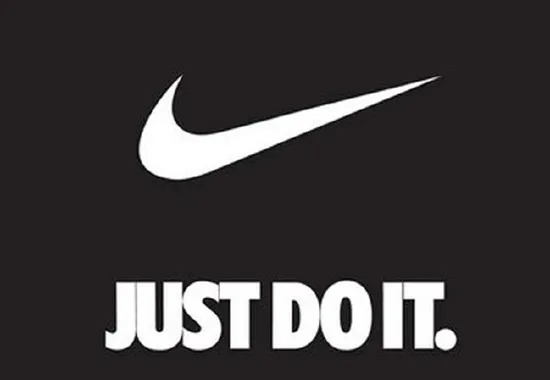
2. De Beers: "A Diamond is Forever" (1947)
This campaign is credited with creating the diamond engagement ring tradition. It associated diamonds with love, commitment, and luxury.
De Beers "A Diamond is Forever" campaign, launched in 1947, is a quintessential example of how advertising can shape cultural norms and consumer behavior. Created by N.W. Ayer & Son by advertising agency, this campaign transformed the diamond industry and American marriage customs.
The slogan, conceived by copywriter Frances Gerety, brilliantly linked diamonds to eternal love while discouraging resale. De Beers employed various tactics to promote diamonds, including product placement in films, featuring celebrities with large diamonds, and creating "role models" for the middle class. They marketed the idea that a diamond's size reflected a man's love and success.
The campaign also promoted giving a second diamond later in marriage. This multi-faceted approach dramatically increased diamond sales, with De Beers' U.S. sales growing from $23 million in 1939 to $2.1 billion in 1979. The campaign's success is evident in the rise of diamond engagement rings among American brides, from 10% in 1940 to 80% in 1990.
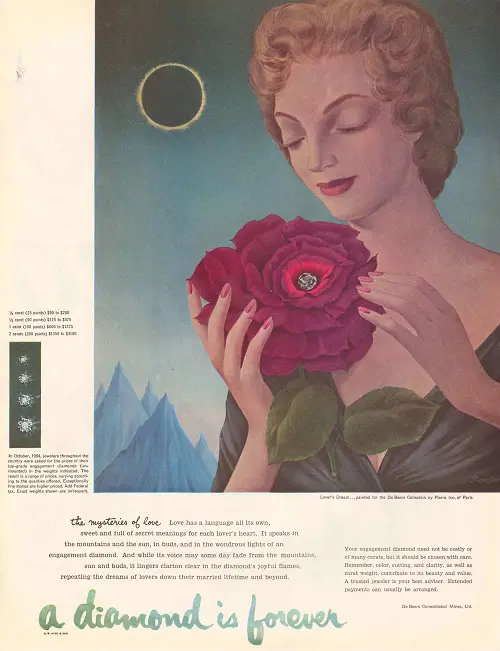
3. Volkswagen: Think Small (1959)
This campaign went against the grain at a time when American cars were big and bulky. It celebrated the Volkswagen Beetle's small size and practicality.
Volkswagen's "Think Small" campaign, launched in 1959 by the Doyle Dane Bernbach (DDB) agency, revolutionized advertising and helped establish the Volkswagen Beetle in the American market. This campaign stood out in an era dominated by large, flashy American cars by embracing the Beetle's small size and unconventional design. The ads featured minimalist layouts with ample white space, a small image of the Beetle, and witty, self-deprecating copy that highlighted the car's practicality and efficiency.
This honest approach was a stark contrast to the hyperbolic claims common in automotive advertising at the time. The campaign's success lay in its ability to turn the Beetle's perceived weaknesses into strengths, appealing to consumers' intelligence and sense of humor. It challenged the prevailing "bigger is better" mentality and positioned the Beetle as a smart, economical choice.
The "Think Small" campaign not only boosted Volkswagen's sales significantly but also ushered in a new era of creative, concept-driven advertising that continues to influence the industry today.

4. Apple: Get a Mac (2006)
This campaign positioned Apple computers as the more user-friendly and creative alternative to PCs. It used humor and celebrity endorsements to appeal to a broad audience.
Apple's "Get a Mac" campaign, launched in 2006, was a groundbreaking advertising series that personified computers to highlight the advantages of Macs over PCs. The campaign featured actors Justin Long as the cool, casual "Mac" and John Hodgman as the stuffy, problematic "PC" in a series of humorous dialogues. Set against a minimalist white background, these ads cleverly showcased Mac's strengths while gently mocking PC's weaknesses.
The campaign's success lay in its ability to humanize the products, creating a relatable and memorable comparison. It effectively positioned Apple as hip, creative, and user-friendly, while portraying PCs as outdated and troublesome.
The ads were adaptable, allowing Apple to address various features and current topics. Running for three years and spanning 66 different TV spots, the campaign significantly boosted Mac sales and left a lasting impact on advertising, earning accolades like the Grand Effie Award in 2007.
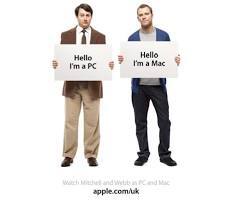
5. Dove: "Real Beauty" (2004-present)
This campaign challenged traditional beauty standards and celebrated the beauty of all women. It helped to redefine what it means to be beautiful.
Dove's "Real Beauty" campaign, launched in 2004, revolutionized beauty advertising by challenging traditional beauty standards. The campaign, created in partnership with Ogilvy, featured real women of diverse ages, shapes, and sizes instead of supermodels. It began with billboards posing thought-provoking questions about beauty, followed by viral videos like "Evolution" (2006) that exposed unrealistic beauty standards in media.
The campaign expanded with initiatives like "Real Beauty Sketches" (2013), highlighting women's skewed self-perceptions. Dove's long-term strategy aimed to improve women's self-esteem and redefine beauty.
The campaign's success is evident in its longevity, widespread media coverage, and significant brand impact. It generated over $150 million in free media exposure and sparked global conversations about beauty standards. Despite some criticism, the campaign has been largely praised for its positive message and innovative approach to advertising.
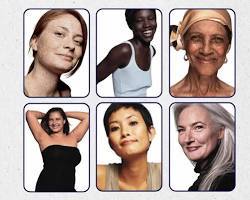
6. Always: #LikeAGirl (2015)
This campaign challenged the negative stereotypes associated with the phrase "like a girl." It showed how limiting these stereotypes can be for girls.
The "Always: #LikeAGirl" campaign, launched in 2015, challenged and redefined the phrase "like a girl," often used as an insult to imply weakness. Created by Leo Burnett, the campaign featured a powerful video that asked girls and young women to demonstrate actions "like a girl," revealing the negative impact of gender stereotypes on self-esteem.
By showcasing the confidence of younger girls who interpreted the phrase positively, the campaign aimed to empower girls to embrace their strength and resilience. The campaign struck a chord globally, sparking a conversation about gender equality and reshaping perceptions of what it means to do something "like a girl." It not only boosted brand recognition for Always but also made a significant cultural impact.
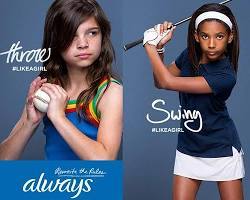
7. California Milk Processor Board: "Got Milk?" (1993-present)
This campaign increased milk consumption by highlighting the importance of milk in a healthy diet. It used humor and celebrity endorsements to get its message across.
The "Got Milk?" campaign, launched by the California Milk Processor Board in 1993 and created by the advertising agency Goodby Silverstein & Partners, became one of the most iconic and enduring advertising campaigns in history. The campaign's premise was simple yet effective: it highlighted the inconvenience and frustration of running out of milk, encouraging consumers to keep it stocked at home.
With its memorable tagline, "Got Milk?" and humorous, relatable ads featuring people in situations where milk was crucial, the campaign resonated with a broad audience. It successfully reinvigorated milk consumption in California and beyond, making "Got Milk?" a cultural catchphrase and significantly boosting milk sales while influencing advertising strategies for decades.
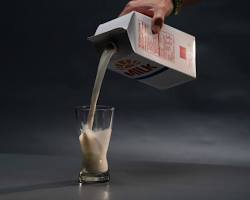
8. Metro Trains: Dumb Ways to Die (2012)
This campaign used a catchy song and dark humor to warn people about the dangers of trespassing on train tracks. It was a huge success in raising awareness of the issue.
The "Dumb Ways to Die" campaign, launched in 2012 by Metro Trains Melbourne and McCann agency, revolutionized public service announcements with its innovative approach to rail safety. The campaign centered around a catchy, darkly humorous song and animated video featuring cute characters dying in absurd ways, with train-related deaths presented as the "dumbest" way to die.
This creative strategy aimed to engage younger audiences by eschewing traditional fear-based messaging. The campaign went viral, garnering millions of views on YouTube within days and spawning numerous parodies and covers. It expanded to include a website, mobile games, books, and posters.
The campaign's success was evident in its widespread cultural impact, numerous advertising awards, and most importantly, a reported 21% reduction in train-related accidents. "Dumb Ways to Die" demonstrated the power of entertainment and humor in conveying serious safety messages, setting a new standard for public awareness campaigns.
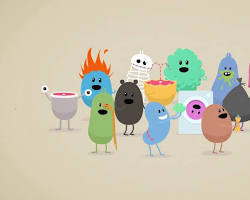
9. Snickers: "You're Not You When You're Hungry" (1997-present)
This campaign uses humor to show how hunger can make people act differently. It's a memorable and effective way to promote Snickers candy bars.
The "You're Not You When You're Hungry" campaign for Snickers, launched in 2010, has been a remarkably successful global advertising initiative. Created by BBDO, the campaign is built on the universal human truth that hunger can negatively affect one's behavior and personality. It cleverly links this insight to Snickers' role as a hunger-satisfying snack.
The campaign features humorous ads showing people acting out of character when hungry, only to return to normal after eating a Snickers bar. Its success lies in its adaptability across different markets and media platforms, from TV commercials to social media activations.
The campaign significantly boosted Snickers' sales, increasing global sales by 15.9% in its first full year and growing market share in 56 out of 58 markets. It has won numerous creative and effectiveness awards, demonstrating its impact on both brand awareness and sales performance.
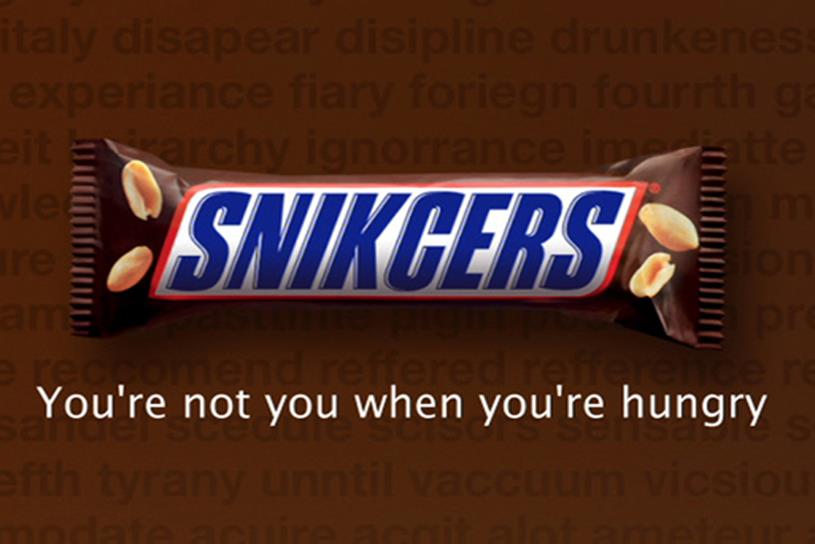
10. Old Spice: The Man Your Man Could Smell Like (2010)
This campaign used humor and social media to target a younger demographic. It helped to revitalize the Old Spice brand and make it more relevant to modern consumers.
The "The Man Your Man Could Smell Like" campaign for Old Spice, launched in 2010 by Wieden+Kennedy, revolutionized the brand's image and the body wash market. The campaign featured Isaiah Mustafa as the charming, shirtless "Old Spice Guy" delivering rapid-fire monologues in surreal settings. It cleverly targeted women, who made 60% of body wash purchases, rather than focusing solely on men.
The ads went viral, combining humor, self-awareness, and memorable catchphrases. The campaign's success was remarkable, doubling Old Spice's sales by July 2010, increasing website traffic by 300%, and generating 1.2 billion earned media impressions. It won numerous awards, including a Cannes Lion Film Grand Prix and an Emmy for Outstanding Commercial.
The campaign's innovative approach, understanding of its audience, and ability to adapt to changing market trends made it one of the most successful advertising campaigns of the 21st century.
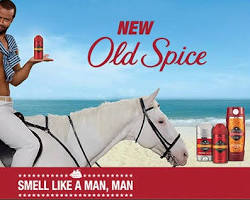
11. Coca-Cola: Share a Coke (2011)
This campaign personalized Coca-Cola products by printing people's names on the cans and bottles. It encouraged people to share Coke with friends and family, which helped to boost sales.
The "Share a Coke" campaign, launched by Coca-Cola in Australia in 2011, was a groundbreaking marketing initiative that personalized the brand experience. The campaign replaced Coca-Cola's iconic logo on bottles and cans with 150 of Australia's most popular names, inviting consumers to share a Coke with friends and family, this simple yet innovative concept tapped into the power of personal connection and self-expression.
The campaign's success was immediate and substantial, with Coca-Cola selling over 250 million named bottles and cans in a country of just 23 million people. It leveraged social media and digital platforms, allowing people to virtually share Cokes and even display names on a giant digital sign in Sydney. The campaign's popularity led to its global expansion, reaching more than 70 countries.
"Share a Coke" effectively combined personalization, social sharing, and emotional appeal, revitalizing the brand and creating a new way for consumers to interact with Coca-Cola.
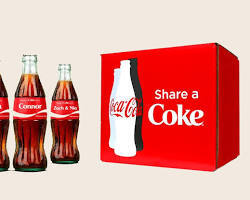
12. US Army: "Be All You Can Be" (1981-present)
This campaign is a classic example of military advertising. It appeals to people's sense of patriotism and adventure, and it highlights the opportunities for training and education that the military provides.
The iconic "Be All You Can Be" advertising campaign by the US Army has been a powerful and enduring presence in the American cultural landscape since its inception in 1981. This long-running campaign has successfully tapped into the aspirations and dreams of generations of young Americans, inspiring them to push the boundaries of their potential and achieve greatness.
Through a series of captivating advertisements featuring the Army's diverse range of career opportunities and the personal fulfillment that comes with serving one's country, the "Be All You Can Be" message has resonated strongly with audiences, positioning the US Army as a gateway to personal and professional growth.
The campaign's emphasis on self-actualization, discipline, and the pursuit of excellence has made it a touchstone of American military recruitment, successfully attracting new recruits for over four decades and solidifying the Army's reputation as a transformative force in the lives of those who choose to serve.
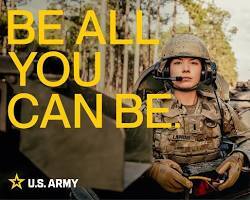
13. M&M's: Melts in Your Mouth, Not in Your Hands (1954-present)
This campaign is a catchy jingle that has been associated with M&M's for decades. It's a simple but effective way to communicate the product's benefit of not melting in hot weather.
The iconic "Melts in Your Mouth, Not in Your Hands" advertising campaign for M&M's has been a beloved and enduring part of the brand's identity since its inception in 1954. This simple yet effective slogan has become deeply ingrained in the public consciousness, serving as a testament to the confectionery's unique selling proposition – a chocolate that remains intact and enjoyable, even in the most challenging conditions.
Through a series of whimsical and lighthearted advertisements, the campaign has successfully conveyed the message that M&M's are a reliable and hassle-free treat, able to withstand the rigors of everyday life without compromising their delicious taste or texture. The campaign's emphasis on the product's durability and convenience has resonated with generations of consumers, helping to solidify M&M's position as a beloved and trusted brand in the highly competitive confectionery market.
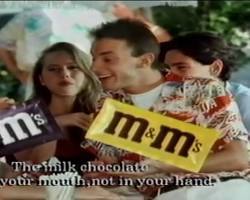
14. KFC: "Finger Lickin' Good" (1955-present)
This campaign is another classic example of a catchy slogan that has been associated with a brand for decades. It's a simple and effective way to communicate the deliciousness of KFC's fried chicken.
KFC's "Finger Lickin' Good" slogan, introduced in 1955, became a defining element of the brand's identity. The phrase perfectly captured the irresistible taste and enjoyment of KFC's fried chicken, suggesting that the food is so delicious, you’ll want to savor every last bite-even licking your fingers. This catchy and relatable tagline resonated with consumers, reinforcing the idea of indulgence and satisfaction associated with KFC's offerings.
Over the decades, the slogan has been featured in countless advertisements, from print to television, helping to create a strong emotional connection with customers. Despite brief pauses in its use, the slogan's enduring appeal has made it synonymous with KFC, cementing its place as a cultural and advertising staple worldwide.
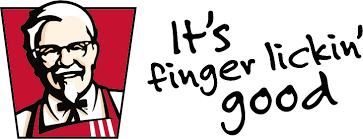
15. Maybelline: Maybe She's Born With It, Maybe It's Maybelline (1991-present)
This campaign is a famous tagline that has been associated with Maybelline for many years. It suggests that Maybelline cosmetics can help people achieve a natural-looking beauty.
Maybelline's "Maybe She's Born With It, Maybe It's Maybelline" campaign, launched in 1991, became a landmark in beauty advertising. The slogan cleverly plays on the idea of natural beauty, suggesting that Maybelline's cosmetics can enhance a woman's natural features to the point where it's hard to tell if her beauty is innate or aided by makeup.
This message resonated with a wide audience, blending the allure of effortless beauty with the accessibility of the brand's products. The campaign's success lies in its catchy and memorable phrasing, which has been used across various media for decades. It helped position Maybelline as a go-to brand for enhancing beauty, making the slogan a lasting part of popular culture and the beauty industry.
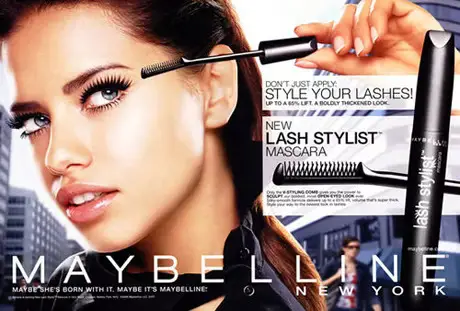
16. L'Oreal: Because You're Worth It (1971-present)
This empowering tagline has resonated with women for decades. It suggests that L'Oreal cosmetics can help women feel confident and beautiful.
The iconic "Because You're Worth It" advertising campaign for L'Oreal has been a powerful and enduring presence in the beauty industry since its inception in 1971. This simple yet impactful slogan has become a rallying cry for self-worth and empowerment, positioning L'Oreal as a brand that celebrates the inherent value and beauty of every individual.
Through a series of visually stunning and emotionally resonant advertisements, the campaign has conveyed the message that L'Oreal products are not merely cosmetic enhancements, but rather tools that help people feel confident, beautiful, and deserving of the best.
The campaign's emphasis on self-esteem, self-love, and the democratization of beauty has struck a chord with consumers around the world, helping to solidify L'Oreal's reputation as a brand that champions the inherent worth and beauty of all people.
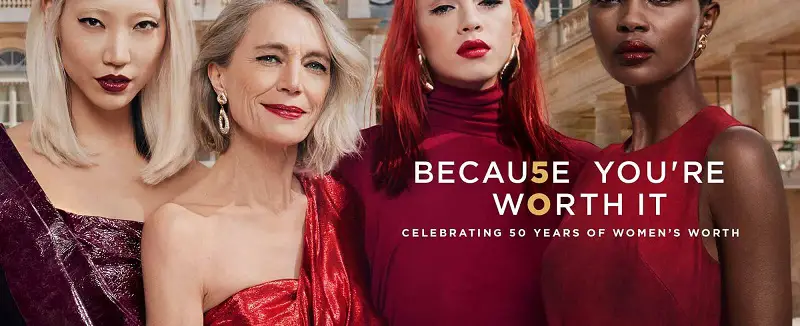
17. Clairol: Does She or Doesn't She? (1960s)
This campaign created a sense of mystery and intrigue around Clairol hair coloring products. It made people wonder if a woman's hair was natural or colored.
The iconic "Does She or Doesn't She?" advertising campaign for Clairol hair color products was a groundbreaking and influential campaign that ran throughout the 1960s. The campaign's central premise was to challenge the taboo surrounding women's use of hair dye, presenting it as a natural and empowering choice rather than a shameful secret.
Through a series of provocative and suggestive advertisements, the campaign encouraged women to embrace their desire for change and self-expression, while also highlighting the high-quality and undetectable nature of Clairol's hair color products. The campaign's playful and coy tone, combined with its bold messaging, resonated with a generation of women who were increasingly asserting their independence and personal autonomy.
As a result, the "Does She or Doesn't She?" campaign played a significant role in normalizing and destigmatizing the use of hair dye, paving the way for Clairol's continued success and the broader acceptance of hair coloring as a mainstream beauty practice.
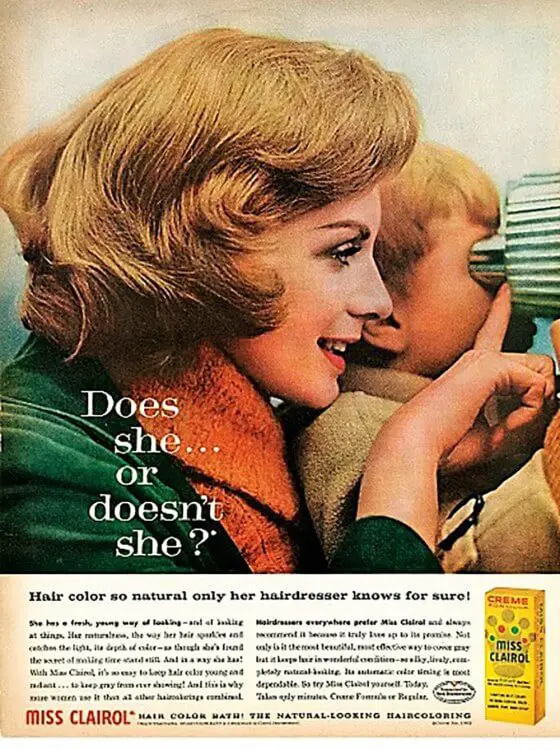
18. Wheaties: Breakfast of Champions (1920s-present)
This campaign positioned Wheaties cereal as a healthy and nutritious breakfast option for athletes and champions. It helped to popularize the cereal and make it a breakfast staple.
The "Breakfast of Champions" advertising campaign for Wheaties cereal has been a cornerstone of the brand's marketing strategy since the 1920s. The campaign's core premise is to position Wheaties as the preferred breakfast choice for athletes, champions, and individuals striving for peak performance.
Through a series of iconic advertisements featuring renowned sports figures, the campaign has conveyed the message that Wheaties provides the essential nutrients and energy needed to fuel an active, successful lifestyle. By aligning the brand with the achievements and prestige of its featured athletes, the "Breakfast of Champions" campaign has cultivated an image of Wheaties as a premium, high-quality cereal that can help consumers reach their full potential.
This enduring campaign has not only solidified Wheaties' status as a beloved American brand, but has also reinforced the broader cultural association between athletic prowess, healthy eating, and personal success.
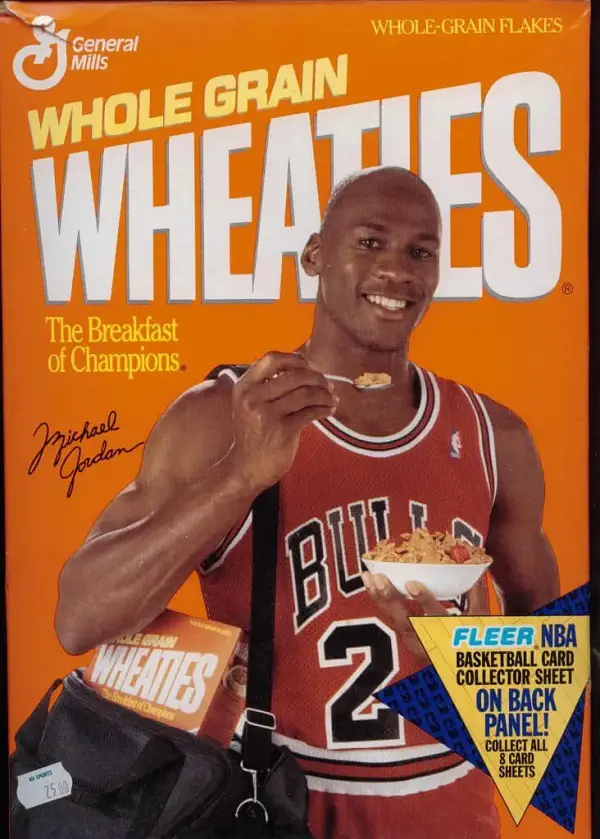
19. Campbell's Soup: M'm! M'm! Good! (1930s-present)
This simple and effective tagline has been associated with Campbell's Soup for decades. It conveys the deliciousness and comfort of the product in a memorable way.
The "M'm! M'm! Good!" advertising campaign for Campbell's Soup has been a hallmark of the brand's marketing strategy since the 1930s. The campaign's catchy jingle and playful slogan have become deeply ingrained in American popular culture, evoking feelings of comfort, nostalgia, and the simple pleasures of a warm, hearty meal. Through a diverse array of advertisements, the campaign has consistently highlighted the quality, versatility, and convenience of Campbell's Soup, positioning it as an essential staple in the modern American household.
By emphasizing the product's rich flavors, nourishing ingredients, and the joy it brings to mealtime, the "M'm! M'm! Good!" campaign has cultivated a strong emotional connection between the brand and its loyal consumers. This enduring campaign has not only solidified Campbell's Soup as a trusted household name, but has also contributed to the brand's enduring status as a comforting, reliable, and quintessentially American food product.
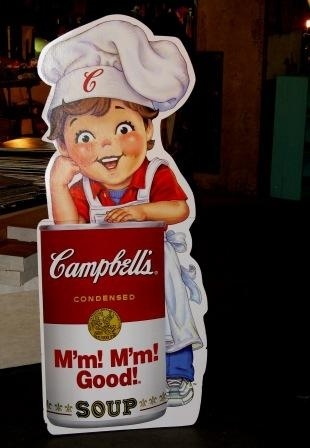
20. The Economist: It's Not a Newspaper. It's The Economist. (2009-present)
This campaign positions The Economist as a more intelligent and insightful alternative to traditional newspapers. It uses a confident and assertive tone to appeal to a sophisticated audience.
The Economist's "It's Not a Newspaper. It's The Economist." campaign, launched in 2009, aimed to differentiate the publication from traditional newspapers by highlighting its unique value proposition. The slogan emphasizes that The Economist is not just a source of news, but a comprehensive analysis tool that offers deeper insights, global perspectives, and thoughtful commentary on complex issues.
The campaign's clever and confident messaging appealed to an intellectually curious audience, positioning The Economist as an essential read for those who seek to understand the world beyond headlines. By challenging the conventional perception of news media, the campaign reinforced The Economist's brand as a premium, insightful publication, helping to attract a discerning readership and solidifying its reputation as a leader in global journalism.
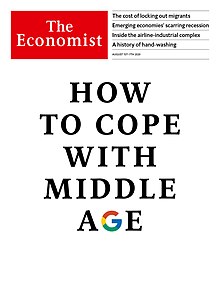
Conclusion
These iconic advertising campaigns exemplify the power of creative messaging and strategic branding. From Nike's motivational "Just Do It" to The Economist: It's Not a Newspaper. It's The Economist" these examples have left lasting impressions and transformed industries. They demonstrate how compelling storytelling, emotional appeal, and clever positioning can resonate with audiences and drive brand success, proving that great advertising is both an art and a science.





